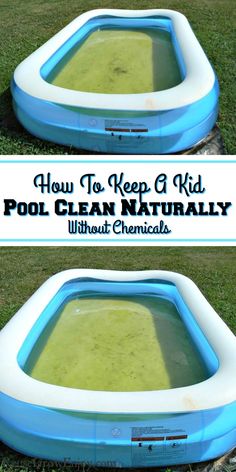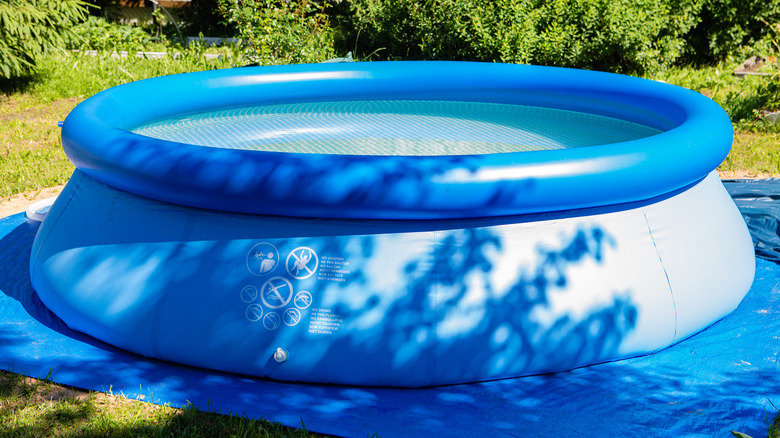Let’s talk about the environmental impact of inflatable pools. We all love a good splash in the pool, especially during hot summer days. Inflatable pools provide a convenient way to cool off and enjoy some fun in the water right in our own backyard. But have you ever stopped to think about the impact these pools might have on the environment? It’s an important topic to consider as we strive to be more conscious of our choices and their effects on the planet. In this article, we’ll delve into the environmental aspects of inflatable pools and explore how they can impact our surroundings. From the materials they’re made of to the water they use, we’ll examine the potential environmental implications and find ways to minimize their harm. Stay tuned to learn more about the environmental impact of inflatable pools and how we can make a positive change.

Introduction
Inflatable pools have become increasingly popular in recent years as a convenient and affordable option for individuals and families to enjoy water activities right in their own backyard. These portable pools offer a wide range of benefits, including easy set-up, affordability, and versatility. However, it’s important to consider the environmental impact of inflatable pools, particularly regarding water consumption, energy usage, chemical usage, and waste generation. In this article, we will explore the environmental impact of inflatable pools and discuss ways to minimize their negative effects.
What are inflatable pools?
Inflatable pools are portable and temporary water structures that can be easily inflated and filled with water. They come in various sizes, from small kiddie pools to large family-sized pools, and are typically made of PVC (polyvinyl chloride) or other plastic materials. These pools require minimal installation and can be deflated and stored when not in use, making them a convenient option for individuals who do not have the space or resources for a permanent pool.

Benefits of inflatable pools
1. Portability
One of the main advantages of inflatable pools is their portability. Unlike traditional pools, inflatable pools can be easily moved and set up in different locations, providing flexibility for individuals who may move frequently or want to switch up their backyard layout.
2. Affordability
Inflatable pools are also significantly more affordable than permanent pools. The cost of purchasing and installing an in-ground or above-ground pool can be prohibitively expensive for many individuals. In contrast, inflatable pools are a cost-effective option that allows people to enjoy the benefits of having a pool without breaking the bank.
3. Easy to set up
Unlike permanent pools that require professional installation and complicated plumbing, inflatable pools are incredibly easy to set up. Most models come with an air pump that inflates the pool within minutes, and filling it with water is as simple as connecting a hose. This makes inflatable pools a popular choice for individuals who want a hassle-free and quick solution for water activities.
4. Versatility
Inflatable pools offer versatility in terms of size and shape. They come in various sizes to accommodate different needs, whether you’re looking for a small pool for young children or a larger pool for hosting summer parties. Additionally, inflatable pools often feature added accessories such as built-in seats, attached slides, or multiple chambers, providing additional fun and entertainment opportunities.

Environmental impact of inflatable pools
While inflatable pools offer many benefits, it’s important to consider their environmental impact. Here are some key factors to consider:
1. Water consumption
Inflatable pools require a significant amount of water to fill, which can contribute to water scarcity concerns, especially in regions already experiencing water stress or drought conditions. Additionally, maintaining the water quality in the pool may require periodic draining and refilling, further increasing water usage.
2. Energy consumption
Inflating an inflatable pool requires electricity to operate the air pump. While the energy consumption for inflation is relatively low, it still adds to overall energy usage. Additionally, if the pool is heated, more energy is consumed to maintain the desired water temperature.
3. Chemical usage
To keep the water clean and safe for use, inflatable pool owners often use chemicals such as chlorine. The continuous use of chemicals can have an impact on water quality and contribute to water pollution when the pool is drained or emptied.
4. Waste generation
At the end of the summer season or when an inflatable pool reaches the end of its lifespan, it is often discarded as waste. Many inflatable pools are not recyclable due to their composition of plastic materials. This results in waste generation that can contribute to landfill accumulation and environmental pollution.

Minimizing the environmental impact
While the environmental impact of inflatable pools cannot be completely eliminated, there are steps that can be taken to minimize their negative effects:
1. Water conservation
To reduce water consumption, consider using a pool cover when the pool is not in use. This will help to minimize evaporation and keep the water cleaner for a longer period of time, reducing the need for frequent refills. Additionally, regular maintenance and proper water treatment can extend the lifespan of the water and reduce the frequency of water changes.
2. Energy efficiency
When inflating the pool, consider using electric air pumps that are energy-efficient or manually inflate the pool using hand or foot pumps. This will help minimize the amount of electricity consumed. If heating the pool, use a solar cover or energy-efficient heating system to reduce energy consumption.
3. Eco-friendly alternatives
Consider using eco-friendly pool cleaning methods and products that are less harmful to the environment. There are alternative water treatment systems available that use natural or non-toxic agents instead of chemicals. Additionally, when it is time to dispose of an old inflatable pool, look for recycling programs or consider repurposing the materials.
4. Education and awareness
Educate yourself and your family about the environmental impact of inflatable pools and the steps that can be taken to minimize their negative effects. By raising awareness and sharing information, you can encourage others to make more sustainable choices when it comes to using and maintaining their inflatable pools.

Conclusion
Inflatable pools provide a convenient and affordable way to enjoy water activities, particularly for individuals and families who do not have access to permanent pools. However, it’s important to consider the environmental impact of these pools, including water and energy consumption, chemical usage, and waste generation. By implementing strategies to minimize their negative effects, such as water conservation, energy efficiency, and eco-friendly alternatives, we can enjoy the benefits of inflatable pools while reducing their environmental footprint. As inflatable pool owners, we have a responsibility to make conscious choices that prioritize both our enjoyment and the well-being of our planet.